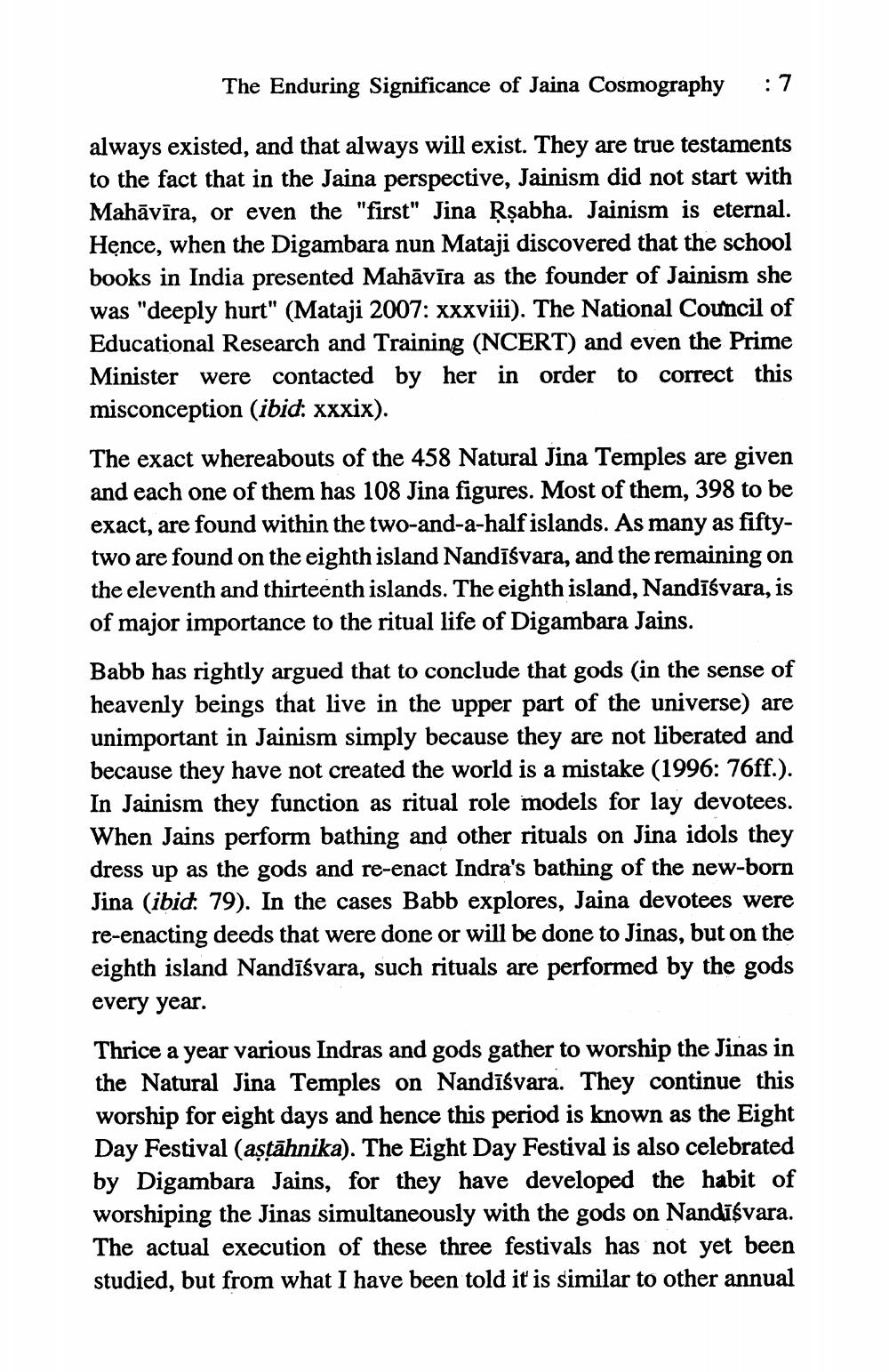________________
The Enduring Significance of Jaina Cosmography
:7
always existed, and that always will exist. They are true testaments to the fact that in the Jaina perspective, Jainism did not start with Mahāvīra, or even the "first" Jina Ķşabha. Jainism is eternal. Hence, when the Digambara nun Mataji discovered that the school books in India presented Mahāvīra as the founder of Jainism she was "deeply hurt" (Mataji 2007: xxxviii). The National Council of Educational Research and Training (NCERT) and even the Prime Minister were contacted by her in order to correct this misconception (ibid: xxxix). The exact whereabouts of the 458 Natural Jina Temples are given and each one of them has 108 Jina figures. Most of them, 398 to be exact, are found within the two-and-a-half islands. As many as fiftytwo are found on the eighth island Nandīśvara, and the remaining on the eleventh and thirteenth islands. The eighth island, Nandīśvara, is of major importance to the ritual life of Digambara Jains. Babb has rightly argued that to conclude that gods (in the sense of heavenly beings that live in the upper part of the universe) are unimportant in Jainism simply because they are not liberated and because they have not created the world is a mistake (1996: 76ff.). In Jainism they function as ritual role models for lay devotees. When Jains perform bathing and other rituals on Jina idols they dress up as the gods and re-enact Indra's bathing of the new-born Jina (ibid. 79). In the cases Babb explores, Jaina devotees were re-enacting deeds that were done or will be done to Jinas, but on the eighth island Nandīśvara, such rituals are performed by the gods every year. Thrice a year various Indras and gods gather to worship the Jinas in the Natural Jina Temples on Nandīśvara. They continue this worship for eight days and hence this period is known as the Eight Day Festival (aştāhnika). The Eight Day Festival is also celebrated by Digambara Jains, for they have developed the habit of worshiping the Jinas simultaneously with the gods on Nandīśvara. The actual execution of these three festivals has not yet been studied, but from what I have been told it is similar to other annual




